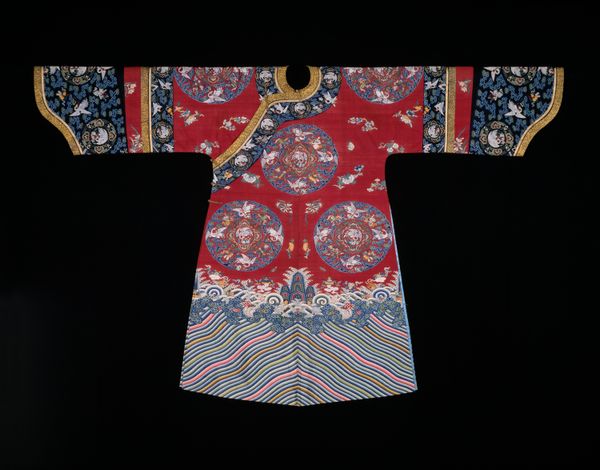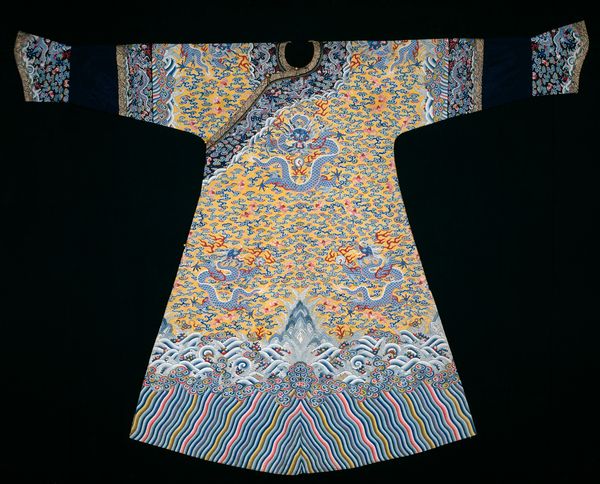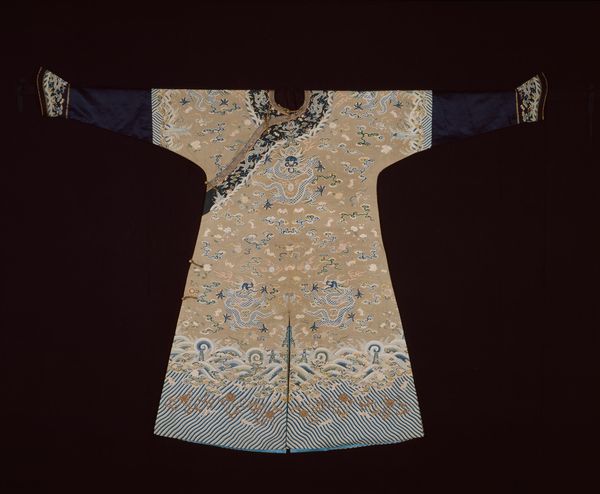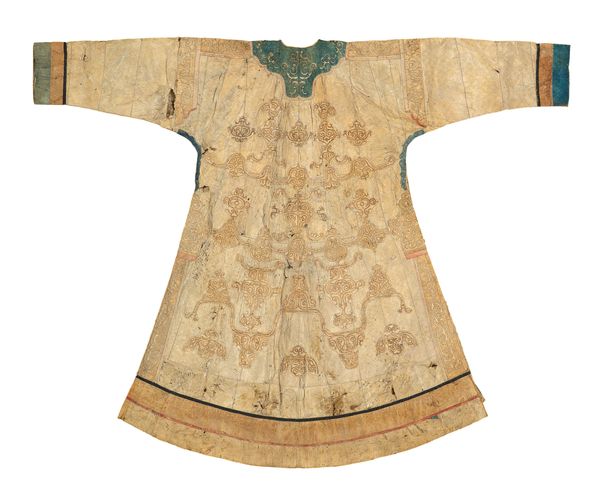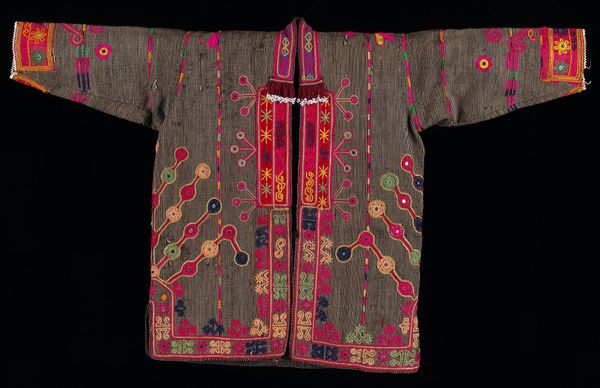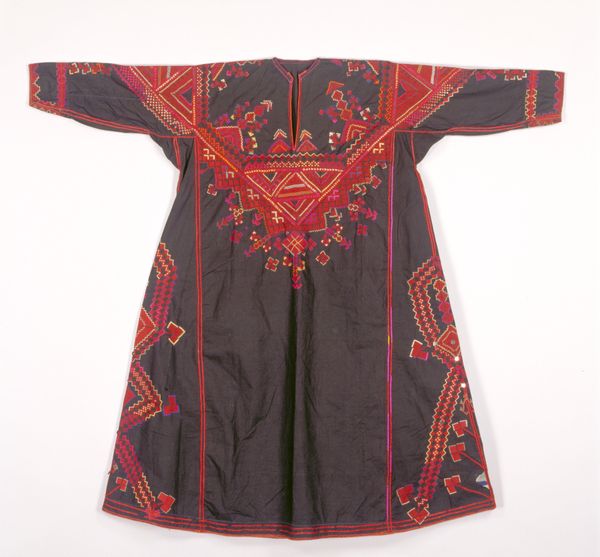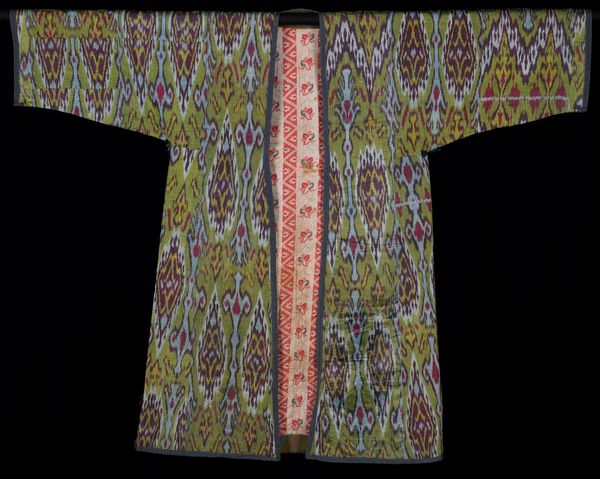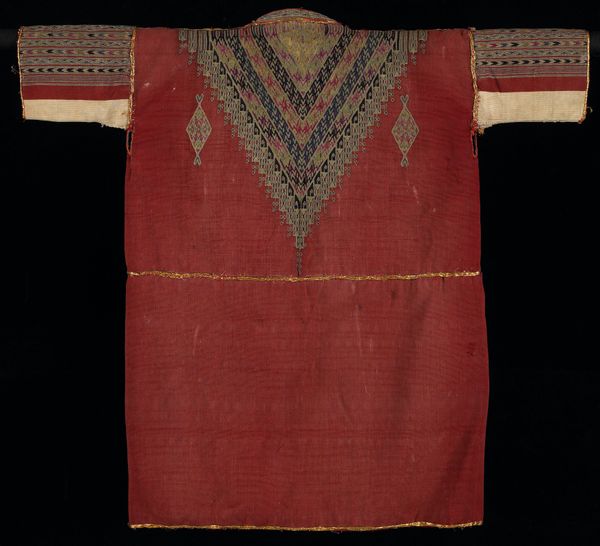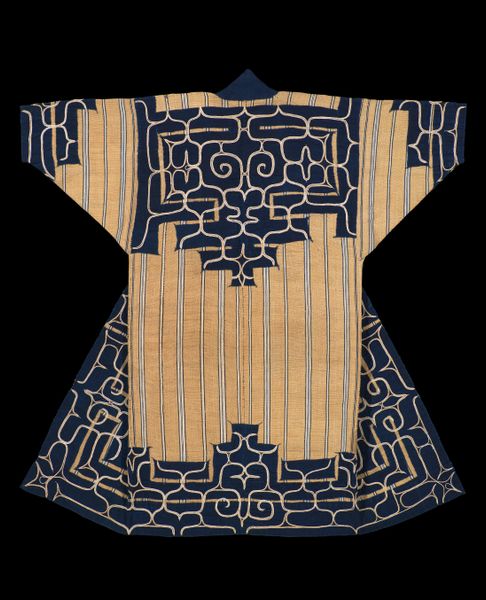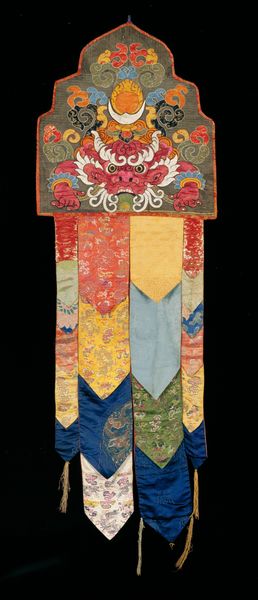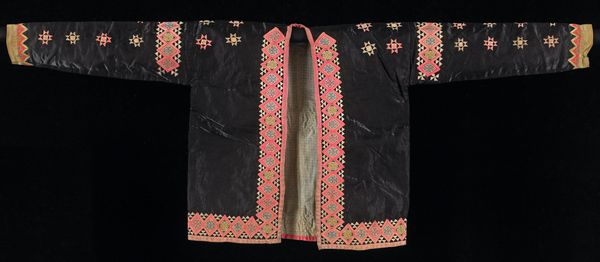
Formal Court Robe Altered for Lamaist Ritual Dance c. late 19th century
0:00
0:00
silk, textile
#
silk
#
asian-art
#
textile
#
fashion and textile design
#
islamic-art
#
textile design
#
decorative-art
Copyright: Public Domain
This is a formal court robe altered for Lamaist ritual dance, likely made in China. The robe combines symbols of imperial power with those of Tibetan Buddhism. Originally worn at court, it features dragons, traditional symbols of the emperor. The garment was later repurposed for religious use, likely in Tibet or Mongolia, as indicated by its altered form and the presence of Buddhist symbols. The robe offers insights into the complex social and political dynamics of the Qing dynasty. The Qing emperors were eager to expand their influence over Tibetan Buddhism, as they viewed it as a stabilizing force on the northern and western frontiers of their empire. Court robes were sometimes offered as gifts to Tibetan Buddhist monasteries to encourage allegiance to the Qing. By studying objects like this robe, and by looking at historical archives, documents and studies in anthropology and religious studies, we can better understand the entanglement of politics, religion, and art in shaping cultural identity and power relations.
Comments
minneapolisinstituteofart almost 2 years ago
⋮
Lamaist (Tibetan Buddhist) dancers wore colorful robes like this one when performing at religious festivals held at monasteries. The robe is actually an import from China. Initially a Chinese court robe, it was altered in Tibet, where the addition of large triangular panels and striped cuffs dramatically refashioned the original, tapered sleeves. Court robes with a dragon embroidered on the neck/chest were popular with Himalayan Buddhists. The Qing dynasty (1636–1912) court presented many dragon-festooned robes, along with other tribute silks, to monasteries in both China and Tibet.
Join the conversation
Join millions of artists and users on Artera today and experience the ultimate creative platform.
